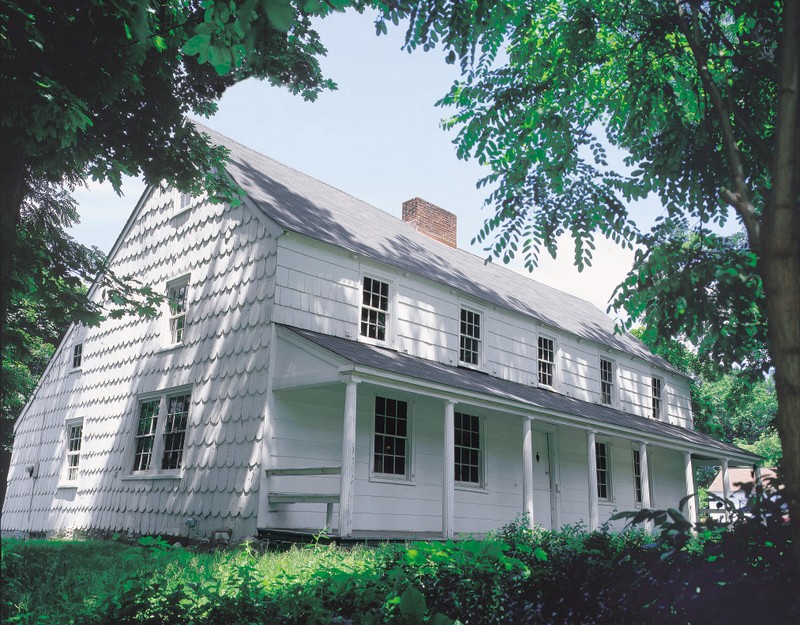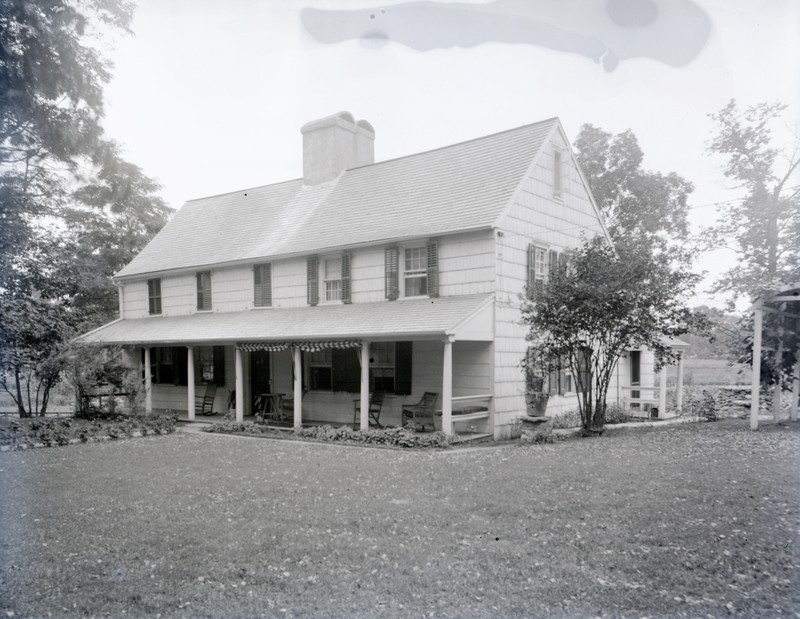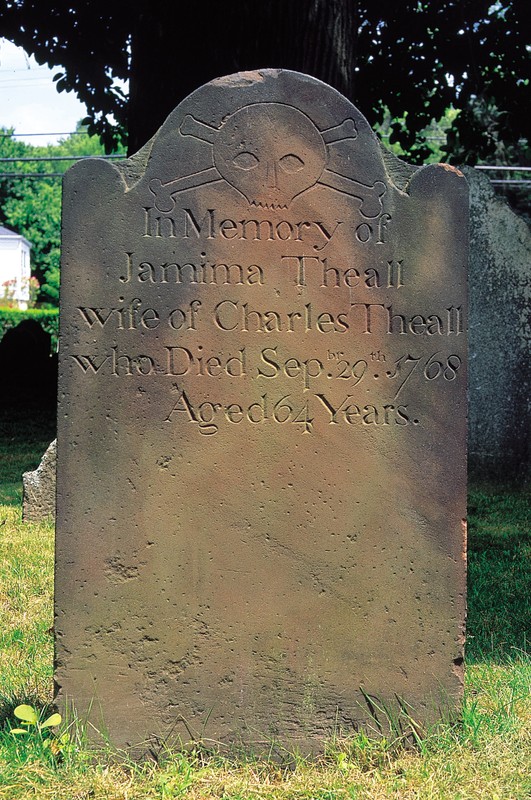Timothy Knapp House and Milton Cemetery
Introduction
Text-to-speech Audio
Images
Timothy Knapp House.

Timothy Knapp House, August 5, 1907.

Tombstone of Jamima Theall in Milton Cemetery.

Backstory and Context
Text-to-speech Audio
In 1667 Timothy Knapp, a native of Watertown, Massachusetts, acquired land on present-day Rye Beach Avenue from Thomas Studwell. By 1670 Knapp had constructed a house on this property. At first, the two-story house consisted of one all-purpose room on the first floor and a bedroom on the second floor. Before the end of the 17th century Knapp expanded his home, adding a parlor to the first floor and a second bedroom to the second floor.
The Knapp family sold the house to Ezekiel Halsted in 1749. The house would remain in the Halsted family until 1906. Ezekiel Halstead added a new kitchen and dining room to the house, and raised and extended its roof to cover the new rooms. This construction changed the structure into a saltbox house. Halsted also sided some of the exterior walls with fish-scale shingles.
Following his death from a fall in 1757, Ezekiel Halstead was interred across the street from his house in Milton Cemetery. This cemetery was laid out in 1750 on land donated to the Town of Rye by Joseph Lyon. The oldest tombstone in the cemetery dates from 1732, and marks a grave that was likely moved to the cemetery from a family burial ground. The number of burials in Milton Cemetery declined during the middle of the 19th century following the establishment of nearby Greenwood Union Cemetery, and interments were prohibited in the cemetery in the early 20th century. Milton Cemetery is owned and maintained by the City of Rye, and contains the graves of many of Rye's early residents as well as a number of interesting tombstones.
In 1906 the descendants of Ezekiel Halstead sold the Timothy Knapp House to Simeon Ford, who was the proprietor of the Grand Union Hotel in Manhattan. Ford's son Ellsworth and daughter Lauren resided at the house. The Fords planted a garden and built a greenhouse north of the house, and the vegetables and flowers grown on the property were shipped daily to the Grand Union Hotel by Ellsworth Ford. Lauren Ford was an artist, and some of her works are held by the Metropolitan Museum of Art.
In 1969 Lauren Ford sold the Timothy Knapp House to the Taylor/Stigdon family, who had been renting the building since 1940. In 1992 the family sold the house, which had been added to the National Register of Historic Places in 1982, to the Rye Historical Society. The society embarked on a restoration project to return the building to its Colonial appearance. Today, the Timothy Knapp House is home to the archives of the Rye Historical Society.
Sources
Kennedy, Karen Morey. "National Register of Historic Places Nomination Form: Timothy Knapp House and Milton Cemetery." November 1, 1980.
Raftery, Patrick. The Cemeteries of Westchester County.. Volume III. Elmsford, N.Y.. Westchester County Historical Society, 2011.
Williams, Gray. Picturing Our Past: National Register Sites in Westchester County.. Elmsford, N.Y.. Westchester County Historical Society, 2003.
Westchester County Historical Society. Photo by Gray Williams.
Westchester County Historical Society.
Westchester County Historical Society. Photo by Gray Williams.
